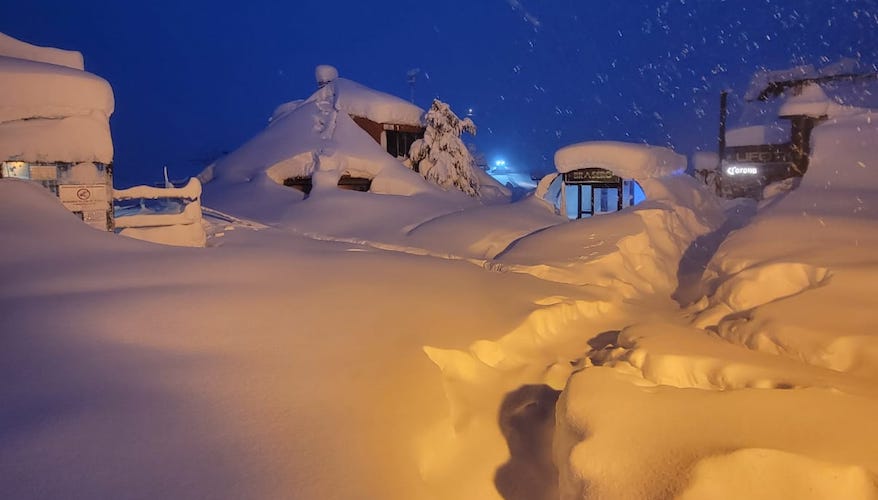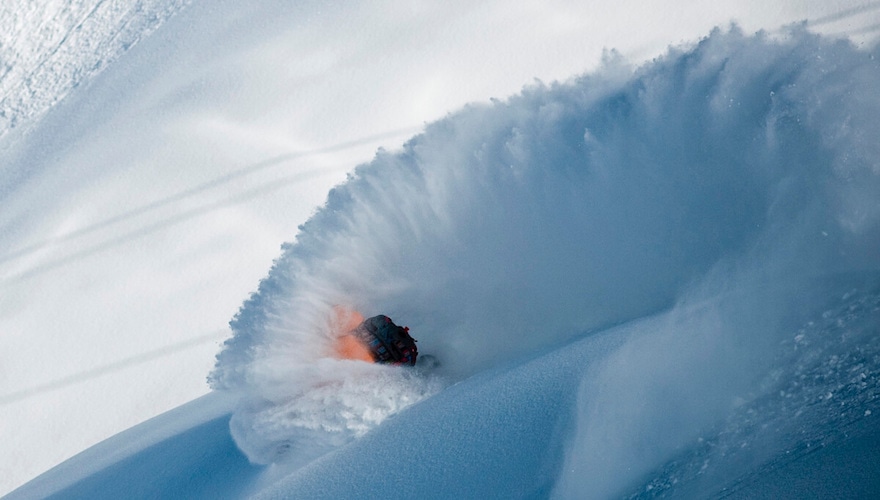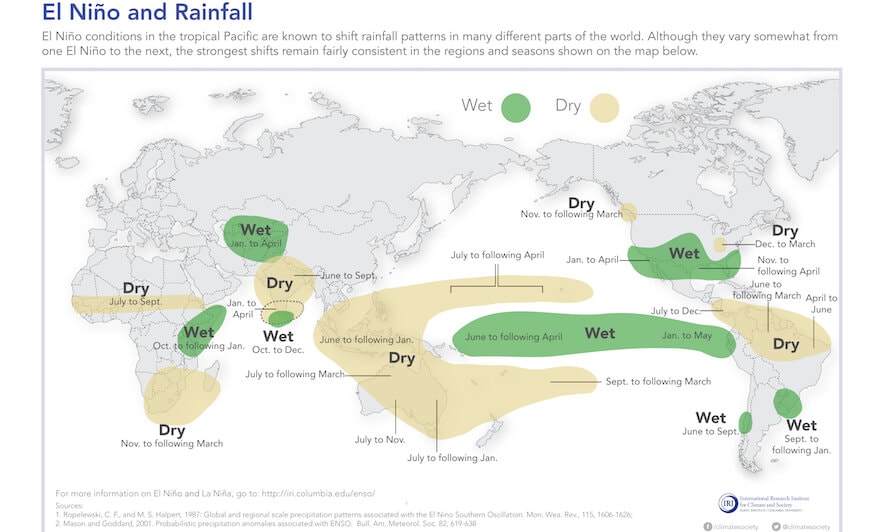In 2023, during massive El Niño fueled winter storms, South American ski resorts were hammered with record breaking snow and a ski season extending into November.
Resorts such as Las Leñas in Argentina and Hotel Portillo in Chile reported a series of snow storms dropping upwards of 8-14 feet of snow per event.
One of South America’s biggest winters and deepest snowpacks over the past decade was June-October 2015. This also happened to be a very strong El Niño cycle.
Chile and Argentina experience heavy rain in the lower elevations and heavy snow in the mountains, blanketing the local ski resorts with deep Andean powder.
Let’s talk about what El Niño actually is and how it relates to skiing in South America.

What is El Niño?
El Niño isn’t a storm that will hit a specific area at a specific time. Instead, the warmer tropical Pacific waters cause changes to the global atmospheric circulation, resulting in a wide range of changes to global weather.
Climate.gov (NOAA)
El Niño occurs when the ocean temperature increases substantially in the Equatorial Pacific, as opposed to La Niña, which characterized by unusually cold ocean temperatures in the Equatorial Pacific.
The increase in water temperature causes the normal trade winds that are blowing over the ocean to weaken and allow for more substantial storm systems to move east over the land. In this case, The vast Andes Mountain chain.
How was El Niño Discovered?
Historically, El Niño seems to have been discovered after correlations between droughts, malaria outbreaks and crop failures pointed to some kind of weather system being responsible. Throughout the 20th century scientists pieced together information but it wasn’t until the early 1980’s that El Niño was thoroughly studied to finally give a name to the patterns-ENSO or El Niño-Southern Oscillation.
What El Niño means for snowboarding and skiing in South America
The warmer water and lack of trade winds over the Pacific Ocean allows for warmer and more moisture heavy storms to cross into South America. The rain storms translate into snow in the high country of Chile and Argentina.

Due to the Andes dry and arid climate these storms actually dry out crossing over the desert before rising to the mountains to produce snow storms with a lower snow water content also known as that classic deep “chile powder” we all love and dream about.
Popular winter sport destinations like Portillo, Farellones and Nevados de Chillan (ex Termas de Chillan Ski Resort) receive consistent storms during El Nino cycles. Also, the Chile backcountry can’t be missed.
Most important to note is that El Nino is only one of many weather systems that contribute to overall seasonal totals, so probably your best bet is to use a 3 to 5 day forecast as opposed to long term predictions.
Why Does El Niño Happen?
“To ask why El Niño occurs is like asking why a bell rings or a pendulum swings,” atmospheric scientist George Philander wrote in a 1999 paper.
“It is a natural mode of oscillation. A bell, of course, needs to be struck in order to ring.” After nearly 100 years of investigation, scientists are still not sure what rings the bell; they just know that it rings.
1997-1998 Was the Biggest El Niño on Record
In 1997-1998, the same year PowderQuest founder arrived to Chile, the ocean temperature rose to 2 degrees above average and Chile saw one of its deepest snowpacks and rainfall in history.
In Chile's famous Portillo ski resort, it snowed 157 inches in only five days during a strong El Niño fueled winter storm.
Fingers crossed that El Niño is coming back for a visit soon to Chile and Argentina’s ski resorts.
To learn more about skiing here check out our ultimate destination guides:

